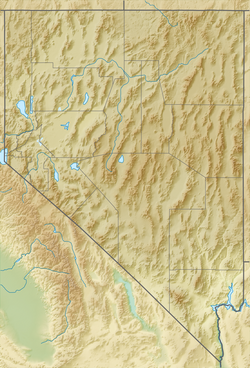| Pyramid Lake Fault Zone | |
|---|---|
 The Pyramid Lake Fault Zone in Nevada, United States | |
| Etymology | Pyramid Indian Reservation |
| Location | Fernley |
| Coordinates | 39°45′N119°20′W / 39.750°N 119.333°W |
| Country | United States |
| Region | Western Nevada |
| State | Nevada |
| Cities | Reno |
| Characteristics | |
| Range | Virginia Range |
| Length | 49 km (30 mi) |
| Strike | N13°W |
| Tectonics | |
| Status | Active |
| Type | Strike slip fault |
| Rock units | Alluvium Eolian Lacustrine |
| Age | Holocene; late Pleistocene |
The Pyramid Lake Fault Zone is an active right lateral-moving (dextral) geologic fault located in western Nevada. It is considered an integral part of the Walker Lane.
The fault zone extends to the southeast from Pyramid Lake roughly parallel to the course of the Truckee River between the Truckee Range to the northeast and the Pah Rah Range to the southwest. [1]
The Pyramid Lake Fault is the easternmost of a series of en echelon faults of the Walker Lane straddling the Nevada – California border. The parallel striking faults to the west are the Warm Springs Valley Fault, the Honey Lake Fault, and the Mohawk Valley Fault. [2]

